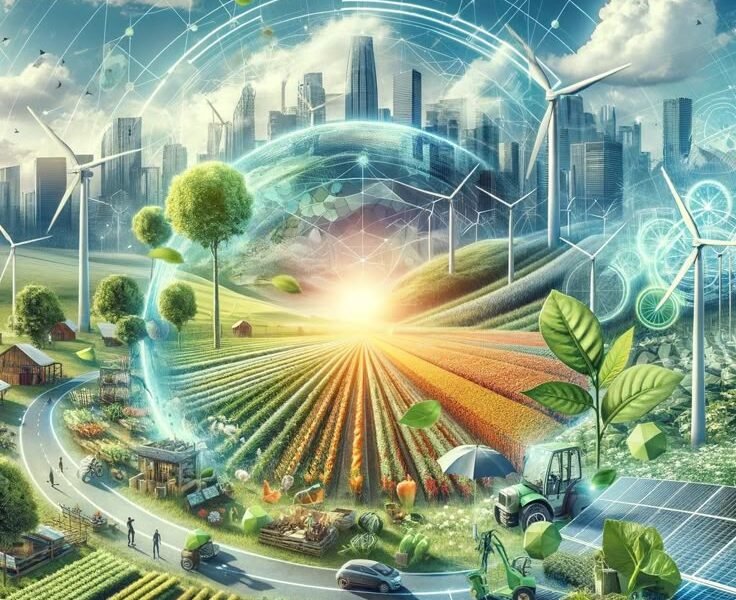
Introduction

We are at a crucial point in history where eco-friendly living is no longer just a choice, but a necessity for our survival. With the growing environmental issues we face, it’s clear that sustainable practices are essential for building a better future.
Living in an environmentally friendly way means:
- Being mindful of what we consume and reducing waste
- Making energy-efficient choices in our daily lives
- Opting for sustainable transportation methods
- Managing our resources responsibly
- Supporting businesses that prioritize the environment
These choices have a much larger impact than just affecting us as individuals. Every sustainable decision we make helps:
“Preserve the fragile ecosystems of our planet, lower carbon emissions, and create a world that future generations can thrive in.”
In this comprehensive guide, we’ll delve into the latest environmental trends for 2025 and beyond. Our goal is to provide you with practical insights that will empower you to live a greener lifestyle. From exploring groundbreaking plant-based diets to understanding the benefits of minimalist living spaces, we’ll cover innovative strategies for sustainable living.
To achieve a sustainable future, we must act quickly and stay committed. Throughout this article, we’ll discuss:
- New eco-friendly technologies and practices on the horizon
- Simple actions you can take to lessen your impact on the environment
- Affordable alternatives that promote sustainability
- Ways to drive positive change for the planet
- Long-term strategies for maintaining an eco-conscious lifestyle
Together, let’s explore these crucial developments that are reshaping our connection with Earth and paving the way for a more sustainable future.
Understanding the Environmental Challenges We Face

Our planet faces unprecedented environmental challenges that demand immediate attention and action. The interconnected web of climate change, pollution, and deforestation creates a complex crisis affecting every living being on Earth.
Climate Change: A Global Emergency
- Rising global temperatures trigger extreme weather events
- Melting polar ice caps lead to rising sea levels
- Disrupted ecosystems threaten biodiversity
- Increased frequency of natural disasters
The Pollution Crisis
- Air pollution causes 7 million premature deaths annually
- Plastic waste chokes our oceans, harming marine life
- Chemical pollutants contaminate water sources
- Soil degradation affects food security
Deforestation: The Loss of Earth’s Lungs
- 27 football fields of forest lost every minute
- Habitat destruction threatens countless species
- Reduced carbon absorption capacity
- Indigenous communities displaced
These challenges might seem overwhelming, but individual actions can create significant positive change. By adopting eco-friendly practices, we can:
- Reduce personal carbon footprints by up to 48%
- Decrease household waste production by 70%
- Support sustainable industries
- Protect biodiversity
- Preserve natural resources
The power of collective action becomes evident when we examine successful environmental initiatives:
“Small changes, when multiplied by millions of people, can transform the world.” – Howard Zinn
Recent studies show that households embracing sustainable practices:
- Cut energy consumption by 30%
- Reduce water usage by 25%
- Lower greenhouse gas emissions by 20%
The path to environmental recovery requires both individual commitment and systemic change. Simple lifestyle modifications, from choosing renewable energy to reducing meat consumption, create ripple effects that contribute to larger environmental solutions.
Key Trends in Eco-Friendly Living for 2025 You Need to Know About

The world of sustainable living is changing quickly, with new and creative solutions being developed to tackle our environmental problems. These groundbreaking trends are redefining how we live, work, and engage with our planet.
1. Plant-Based Diets: A Delicious Way to Save the Planet

The move towards plant-based eating has become a powerful force in sustainable living. Research shows that plant-based diets can reduce an individual’s carbon footprint by up to 73%, making it one of the most impactful personal choices for environmental conservation.
Health Benefits of Plant-Based Living:
- Reduced risk of heart disease
- Lower blood pressure
- Decreased inflammation
- Better weight management
- Enhanced digestive health
Environmental Impact:
- 70% reduction in water consumption
- 50% decrease in land use
- Significant reduction in deforestation
- Lower greenhouse gas emissions
The plant-based market has experienced remarkable innovation, creating delicious alternatives that rival traditional animal products:
Popular Plant-Based Innovations:
- Lab-grown meat alternatives using cellular agriculture
- Mushroom-based leather for sustainable fashion
- Algae-derived protein supplements
- Fermented dairy alternatives from nuts and seeds
Leading brands are revolutionizing the food industry with creative solutions:
“The future of food is plant-based. We’re seeing unprecedented innovation in this space, with new products that not only match but often surpass their animal-based counterparts in taste and nutrition.” – Plant-Based Foods Association
Market-Leading Products:
- Beyond Meat’s advanced meat alternatives
- Impossible Foods’ revolutionary burger technology
- Perfect Day’s animal-free dairy proteins
- NotCo’s AI-driven plant-based formulations
The accessibility of plant-based options has improved dramatically, with major retailers and restaurants embracing these alternatives. Supermarkets now dedicate entire sections to plant-based products, while fast-food chains incorporate vegetarian and vegan options into their standard menus.
This shift extends beyond food choices to encompass a broader lifestyle change. Plant-based beauty products, clothing materials, and household items are gaining popularity as consumers recognize the interconnected nature of sustainable living.
2. Zero-Waste Living: From Trash to Treasure
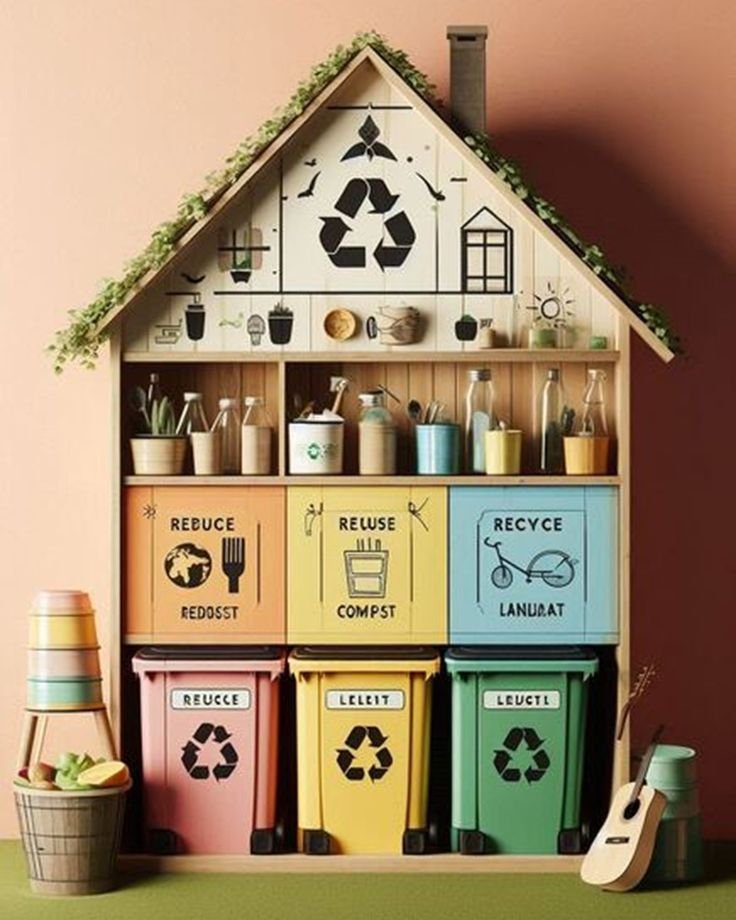
Zero-waste living is a game-changing way of looking at how we consume things today. It’s all about getting rid of waste by making thoughtful choices and finding creative ways to reuse items. This way of life goes beyond just recycling – it challenges us to completely rethink how we view resources and consumption.
Core Principles of Zero-Waste Living:
- Refuse unnecessary items, especially single-use plastics
- Reduce consumption to essential needs
- Reuse items through creative repurposing
- Recycle materials properly
- Rot (compost) organic waste
The impact of zero-waste practices on landfills proves significant. A single person adopting zero-waste habits can prevent approximately 1,600 pounds of waste from reaching landfills annually.
Practical Zero-Waste Home Solutions:
- Kitchen Innovations
- Replace paper towels with reusable cloth alternatives
- Store produce in breathable cotton bags
- Use beeswax wraps instead of plastic wrap
- Create cleaning solutions from vinegar and citrus peels
- Bathroom Transformations
- Switch to bar soaps and shampoos
- Adopt reusable makeup removal pads
- Choose bamboo toothbrushes
- Use safety razors
- DIY Projects
- Transform glass jars into storage containers
- Create natural air fresheners from dried flowers
- Upcycle fabric scraps into produce bags
- Build a composting system
The zero-waste movement emphasizes mindful purchasing decisions, which can also help protect marine ecosystems. Before acquiring new items, consider:
- Product longevity
- Packaging materials
- Repair possibilities
- End-of-life disposal options
Local bulk stores, farmers’ markets, and repair shops become essential resources in maintaining a zero-waste lifestyle. These community hubs provide package-free options and extend product lifecycles through maintenance services.
Digital tools support zero-waste living through apps that track waste reduction, locate bulk shopping options, and connect users with local composting facilities. This tech integration makes sustainable choices more accessible and measurable.
3. Sustainable Transportation Options: Going Green on the Move

Transportation accounts for nearly 30% of global carbon emissions. The shift toward sustainable transportation methods represents a critical step in reducing our environmental impact while creating healthier communities.
Active Transportation Benefits:
- Reduced carbon footprint
- Improved physical health
- Lower transportation costs
- Decreased traffic congestion
- Enhanced community connectivity
Cities worldwide are transforming their infrastructure to accommodate eco-friendly transportation. Protected bike lanes, pedestrian zones, and integrated public transit systems create safer, more accessible spaces for sustainable commuting.
Public Transit Revolution 2025:
- High-speed electric buses
- Solar-powered train networks
- Smart transit apps for real-time tracking
- Integrated payment systems
- Last-mile connectivity solutions
The electric vehicle (EV) market is experiencing unprecedented growth. Advanced battery technology has extended driving ranges to 400+ miles per charge, while charging stations become as common as traditional gas stations.
EV Innovations:
- Wireless charging roads
- Vehicle-to-grid technology
- Self-driving capabilities
- Affordable entry-level models
- Extended battery life spans
Emerging Transportation Technologies:
Electric scooters with AI navigation, hydrogen-powered vehicles, flying electric taxis, Hyperloop systems, smart traffic management
Cities implementing sustainable transportation initiatives report:
“A 45% reduction in carbon emissions” “60% improvement in air quality” “30% decrease in commute times”
The integration of these sustainable transportation options creates a comprehensive network that serves diverse commuting needs while significantly reducing environmental impact. Companies now offer incentives for employees choosing green commuting options, from bike-sharing memberships to EV charging stations at workplaces.
4. The Rise of Slow Fashion: Dressing with Purpose and Style

The fashion industry’s impact on the environment is significant:
- 10% of global carbon emissions come from fashion production
- 20% of global wastewater comes from fabric dyeing
- 85% of textiles are thrown away each year
The fast fashion industry, known for its quick production cycles and cheap clothing, is a major contributor to these problems. Its practices have severe consequences for the environment. For example, synthetic materials used in fast fashion release microplastics into our water systems, while excessive water consumption and the use of toxic chemicals pollute ecosystems. Additionally, behind the scenes, garment workers often face unsafe working conditions, receive unfair wages, and experience exploitation.
Enter Slow Fashion: A Sustainable Solution
Slow fashion emerges as a revolutionary alternative, prioritizing quality, longevity, and ethical production. It offers a solution to the environmental and social issues caused by fast fashion.
Sustainable fashion brands set themselves apart from traditional brands through:
These brands prioritize transparency in their supply chains, ensuring that consumers know where their products come from and how they are made. This includes:
- Establishing direct relationships with suppliers
- Publishing factory lists
- Providing clear information about material sourcing
Sustainable fashion brands are committed to treating their workers fairly and ensuring their well-being. This means implementing ethical labor practices such as:
- Paying fair wages
- Providing safe working conditions
- Empowering workers through programs that promote their rights and skills
Instead of relying on harmful materials that contribute to pollution and waste, sustainable fashion brands opt for eco-conscious alternatives. They use materials like:
- Organic cotton, which is grown without synthetic pesticides or fertilizers
- Recycled polyester, made from post-consumer plastic bottles
- Hemp and other sustainable fibers that require less water and chemicals to produce
The Power of Second-Hand Shopping
Second-hand shopping has undergone a transformation in recent years. What was once seen as a necessity for those on a budget has now become a fashionable choice for many. Online platforms like ThredUp, Depop, and Poshmark have made it easier than ever to buy and sell pre-loved clothing.
Not only does second-hand shopping offer an affordable way to build a unique wardrobe, but it also helps extend the lifecycle of clothing items. By giving these garments a new home instead of sending them to landfills, we can reduce our overall environmental impact.
Redefining Fashion Consumption
In addition to second-hand shopping, there are several other creative alternatives that are reshaping how we consume fashion:
- Clothing rental services: Renting clothes for special occasions or everyday wear allows us to enjoy new styles without contributing to overproduction.
- Capsule wardrobe planning: Building a capsule wardrobe involves curating a collection of versatile pieces that can be mixed and matched to create various outfits.
- Clothing swap events: Organizing clothing swap events with friends or community members promotes sharing and reduces the need for new purchases.
- DIY clothing modifications: Instead of discarding old or ill-fitting clothes, getting creative with DIY modifications can breathe new life into our garments.
Values Behind Sustainable Fashion
The shift towards sustainable fashion goes beyond just individual choices; it reflects deeper values within society:
- Supporting ethical businesses: By consciously choosing to purchase from sustainable brands, we contribute to the growth of ethical practices in the fashion industry.
- Reducing environmental impact: Opting for sustainable materials and production methods helps mitigate the negative effects of fashion on our planet.
- Creating lasting personal style: Embracing slow fashion encourages us to invest in timeless pieces that align with our personal aesthetics rather than chasing fleeting trends.
- Building community through conscious consumption: Engaging with local thrift stores or participating in clothing swaps fosters connections between individuals who share similar values.
Innovations in Sustainable Fashion
Sustainable fashion brands are constantly pushing boundaries and finding innovative solutions to address environmental challenges:
- Biodegradable materials: Developing fabrics that break down naturally at the end of their lifecycle reduces landfill waste.
- Zero-waste patterns: Designing garments in such a way that no fabric scraps are left behind during production minimizes resource consumption.
- Circular business models: Implementing systems where products can be returned or recycled after use creates closed-loop processes.
These advancements prove that style and sustainability can coexist harmoniously. They challenge the notion that being environmentally conscious means sacrificing aesthetic appeal.
As we look ahead into the future of fashion, it’s clear that both people and the planet deserve better. By embracing slow fashion principles—prioritizing quality over quantity, supporting ethical practices, and making mindful choices—we can create an industry that benefits all stakeholders involved.
5. Remote Work Revolution: How Telecommuting Benefits People and Planet Alike

The rise of remote work has transformed into a powerful catalyst for environmental change. Recent studies reveal that a single remote worker can reduce their carbon emissions by up to 3 metric tons annually – equivalent to planting 73 trees.
Carbon Footprint Reduction Through Remote Work:
- Elimination of daily commutes cuts vehicle emissions
- Reduced office energy consumption
- Decreased paper usage and office supplies
- Lower commercial real estate demand
- Minimized food packaging waste from takeout lunches
Remote work’s environmental impact extends beyond individual contributions. Companies embracing telecommuting report a 30% reduction in their organizational carbon footprint, primarily through reduced energy consumption in office spaces.
Creating an Eco-Friendly Home Office:
Energy-Efficient Setup
- LED desk lamps with natural light positioning
- ENERGY STAR certified equipment
- Smart power strips to eliminate phantom energy drain
- Programmable thermostats for optimal temperature control
Indoor Air Quality Enhancement
- Air-purifying plants like snake plants and peace lilies
- Natural ventilation systems
- Non-toxic cleaning supplies
- Low-VOC paint and sustainable office furniture
Digital Sustainability Practices:
- Cloud-based storage solutions
- Paperless documentation
- Energy-efficient video conferencing
- Digital collaboration tools
The remote work revolution has sparked innovative approaches to sustainable home office design. Companies like Sustainable Office Solutions now offer eco-certified home office packages, featuring reclaimed wood desks, ergonomic chairs made from recycled materials, and energy-monitoring smart devices.
A greener home office setup doesn’t require a complete overhaul. Small changes – like positioning your desk near natural light sources or using a laptop instead of a desktop computer – can reduce energy consumption by up to 50%. These adjustments create a ripple effect of environmental benefits while maintaining productivity and comfort in your home workspace.
6. Tiny Houses, Big Impact: Exploring Minimalist Living Spaces with Maximum Sustainability Potential

The tiny house movement represents a radical shift in how we perceive living spaces. These compact dwellings, typically ranging from 100 to 400 square feet, pack substantial environmental benefits into their small footprints.
Key Benefits of Tiny House Living:
- Reduced Energy Consumption: Smaller spaces require less heating, cooling, and lighting
- Lower Water Usage: Compact bathrooms and kitchens naturally minimize water waste
- Decreased Material Waste: Limited space discourages unnecessary purchases
- Minimal Land Impact: Smaller foundations preserve natural habitats
- Reduced Utility Costs: Average savings of 40-60% on monthly bills
Tiny houses embrace innovative sustainable building practices. Popular eco-friendly materials include:
- Reclaimed barn wood
- Recycled steel and aluminum
- Sustainable bamboo flooring
- Hemp insulation
- Salvaged windows and doors
The movement has evolved beyond basic designs to incorporate cutting-edge sustainable technologies:
- Solar panel integration
- Rainwater harvesting systems
- Composting toilets
- Smart home automation for energy efficiency
- Vertical gardens and green roofs
Many tiny house communities are emerging as sustainable neighborhoods, creating shared spaces for gardens, workshops, and community activities. These micro-communities demonstrate how downsizing individual living spaces can strengthen social connections while reducing environmental impact.
The financial advantages of tiny house living extend beyond utility savings. With average construction costs ranging from $20,000 to $60,000, tiny houses offer an affordable path to homeownership. This accessibility enables more people to invest in sustainable living solutions while breaking free from traditional mortgage constraints.
The tiny house movement proves that sustainable living doesn’t require sacrifice. Creative storage solutions, multifunctional furniture, and thoughtful design make these spaces feel spacious despite their small size. As urban density increases and environmental concerns grow, tiny houses represent a practical solution for sustainable living in 2025 and beyond.
7. Food Waste Warriors: Simple Practices That Make a Difference in Our Kitchens and Beyond
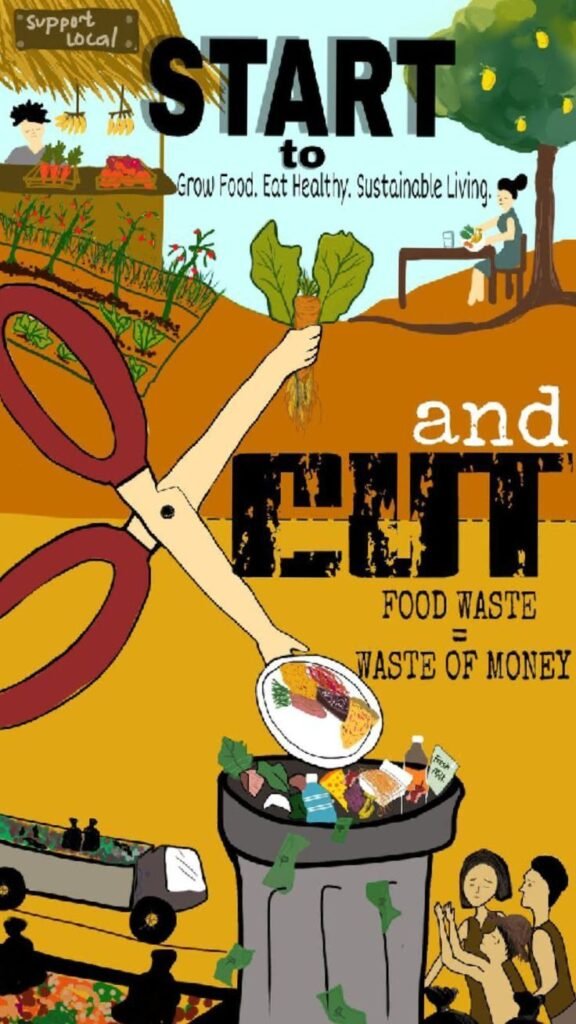
Food waste creates a significant environmental burden, with nearly one-third of global food production ending up in landfills. The fight against food waste starts with understanding its impact throughout the supply chain and implementing practical solutions at home.
Supply Chain Solutions
- Smart inventory management systems track perishable items
- AI-powered demand forecasting reduces overproduction
- Imperfect produce programs rescue “ugly” fruits and vegetables
- Food rescue apps connect surplus food with local charities
- Blockchain technology improves traceability and reduces waste
Home Storage Innovations
- Smart refrigerators with spoilage detection
- Vacuum-sealed containers extend food freshness
- Ethylene absorbers prevent premature ripening
- Temperature-controlled drawers optimize storage conditions
- Biodegradable packaging materials minimize environmental impact
Strategic Meal Planning
- Create weekly meal schedules based on perishable ingredients
- Practice the “first in, first out” rotation method
- Use portion planning tools to avoid overcooking
- Transform leftovers into new meals
- Preserve seasonal produce through freezing or canning
Storage Best Practices
- Store fruits and vegetables separately
- Keep herbs fresh in water-filled jars
- Use clear containers for visibility
- Label items with purchase dates
- Maintain optimal refrigerator temperature at 40°F (4°C)
The rise of food waste tracking apps helps households monitor consumption patterns and identify areas for improvement. These digital tools provide personalized recommendations and connect users with local food sharing communities.
Advanced composting systems transform unavoidable food waste into nutrient-rich soil amendments. Home composting units now feature automated temperature control and odor management, making sustainable waste disposal accessible to urban dwellers.
Consumer Attitudes Towards Sustainability: A Shift Towards Conscious Choices
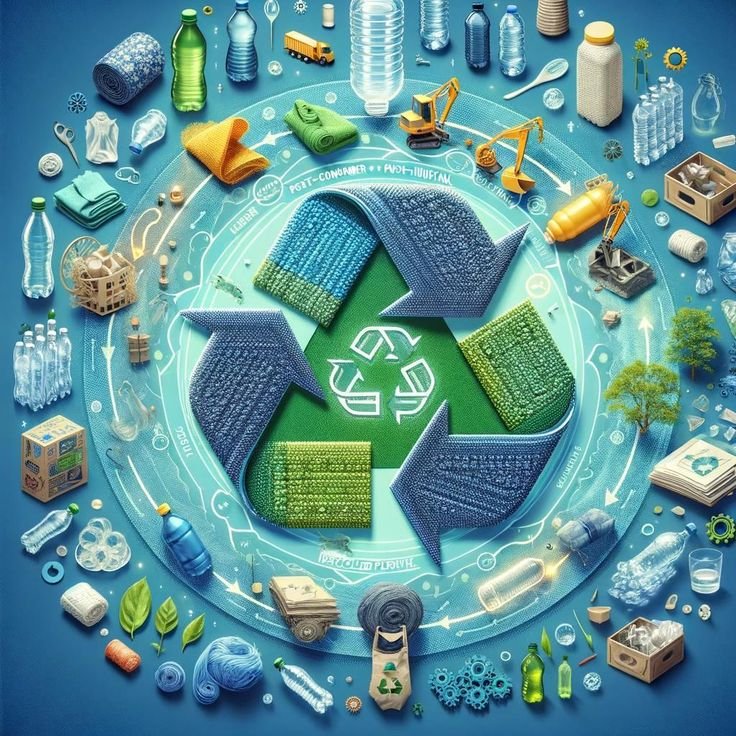
The conscious consumerism movement has gained unprecedented momentum, reshaping purchasing behaviors across generations. Recent market research reveals striking statistics:
- 78% of consumers now prioritize eco-friendly products
- 65% actively research a brand’s sustainability practices before making purchases
- 82% are willing to pay more for products with transparent supply chains
This shift in consumer mindset has created a ripple effect throughout industries, pushing companies to:
- Adopt sustainable packaging solutions
- Implement ethical sourcing practices
- Develop eco-friendly product alternatives
- Provide detailed environmental impact information
Yet, several barriers continue to challenge the widespread adoption of sustainable choices:
Price Points: Premium costs associated with sustainable products create accessibility issues for budget-conscious consumers.
Availability: Limited distribution channels and product options in certain regions restrict consumer access to eco-friendly alternatives.
Information Overload: The abundance of conflicting information about sustainability claims leads to decision paralysis and skepticism.
Convenience Factor: Sustainable options often require additional effort or planning, deterring time-strapped consumers.
Market analysts predict these barriers will diminish as:
- Technology advances reduce production costs
- Supply chains become more efficient
- Digital platforms improve product transparency
- Local sustainable initiatives expand
The conscious consumerism movement 2025 marks a turning point where sustainable choices become the standard rather than the exception. Companies that fail to align with these evolving consumer values risk losing market share to more environmentally responsible competitors.
The Role of Government and Brands in Driving Sustainable Change For A Better Tomorrow
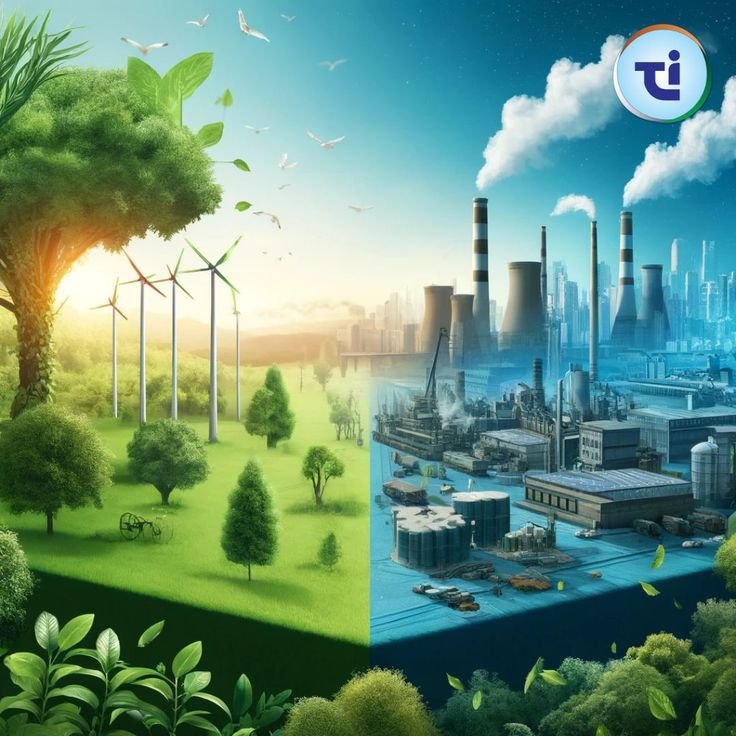
Government policies shape the landscape of environmental protection through strategic initiatives and regulatory frameworks. The Paris Agreement stands as a cornerstone of international climate action, establishing binding commitments for nations to reduce greenhouse gas emissions. Countries implementing these agreements create ripple effects across industries, fostering innovation in sustainable technologies and practices.
Key Government Initiatives Making an Impact:
- Carbon pricing mechanisms
- Renewable energy incentives
- Green building standards
- Waste management regulations
- Electric vehicle subsidies
The private sector responds to these regulatory frameworks by developing eco-friendly solutions. Companies now recognize sustainability as a core business value rather than an optional add-on. This shift manifests in:
- Product innovation using recycled materials
- Energy-efficient manufacturing processes
- Transparent supply chain practices
- Investment in renewable energy infrastructure
Brands play a crucial role in making sustainable options accessible to consumers. Progressive companies are:
“Creating affordable eco-friendly alternatives without compromising quality is not just good business – it’s essential for planetary health.”
Corporate Sustainability Leadership Examples:
- Implementing take-back programs for product recycling
- Developing plastic-free packaging solutions
- Investing in clean energy for operations
- Supporting local environmental initiatives
The collaboration between governments and businesses creates a powerful force for environmental change. As policies evolve and corporate commitments strengthen, sustainable practices become increasingly integrated into daily life. This partnership drives innovation, scales green solutions, and accelerates the transition toward a more sustainable future.
Technological Innovations Fueling The Eco-Friendly Revolution
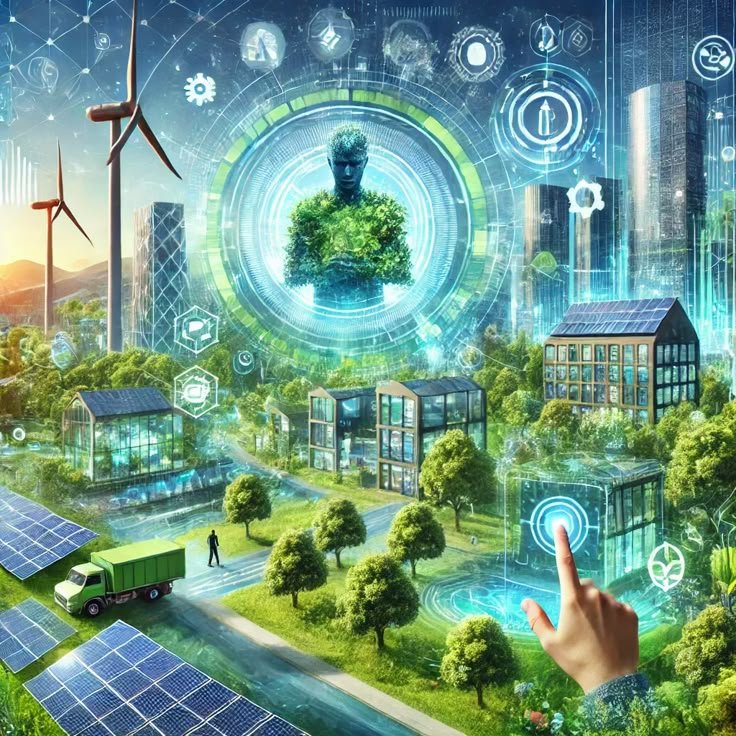
The world of renewable energy is changing faster than ever before, thanks to innovative technologies that are redefining how we generate power. Leading the charge in this movement are solar and wind energy, which are now more efficient and affordable than ever, paving the way for a greener future.
Solar Power Advancements
Recent developments in solar technology include:
- Next-generation photovoltaic cells achieve 40% higher efficiency
- Transparent solar panels integrate seamlessly into windows and buildings
- Solar storage solutions extend power availability to 24/7
- Affordable residential systems make clean energy accessible to homeowners
Wind Energy Evolution
The wind energy sector is also witnessing significant advancements:
- Floating offshore wind farms unlock vast energy potential
- Advanced turbine designs capture energy at lower wind speeds
- Smart grid integration optimizes power distribution
- Community wind projects empower local energy independence
By 2025, experts predict renewable energy will power 40% of global households, marking a significant shift from traditional fossil fuels. This rapid adoption stems from:
-
- Decreased installation costs (65% reduction since 2020)
- Enhanced energy storage capabilities
- Improved grid infrastructure
- Innovative financing options
The future of eco-friendly living lies in these technological breakthroughs. As costs continue to decline and efficiency improves, renewable energy will become the standard for powering homes and businesses worldwide. This shift represents not just an environmental victory, but a practical solution for sustainable living in the modern world.
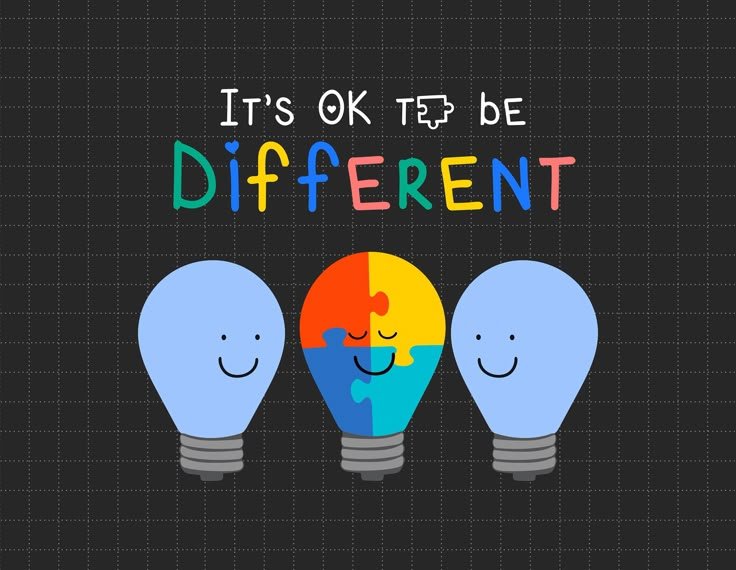
At Eco Beginner, we are committed to making this battle a bit easier and significantly more effective. We provide a diverse selection of eco-conscious, print-on-demand products, ranging from cozy cushions and trendy t-shirts to delightful mugs, wall art, lockets, puzzles, and much more. Every product we offer is crafted to facilitate a more sustainable lifestyle while still infusing joy and beauty into your everyday routine. When you choose to buy from us, you are making a deliberate decision to support a greener tomorrow.
Not only will you be acquiring distinctive, high-quality items, but you will also support a brand that genuinely cares about the environment. All of our products are designed with sustainability in focus, ensuring that every purchase you make aids in preserving the planet for future generations.
Every step you take with us brings you closer to a brighter, more sustainable future. In addition to our eco-friendly offerings, we are thrilled to introduce our new book on sustainable living. This book is an all-encompassing guide, brimming with practical insights, heartfelt counsel, and motivating tales to help you adopt a more eco-friendly lifestyle. By supporting us, you’re not just acquiring a product—you’re also endorsing a movement aimed at change.
Moreover, 50% of our profits are donated to charitable organizations, aiding those in distress and promoting environmental initiatives that can help heal the planet. Everything we produce is eco-friendly, and each purchase you make contributes to a lasting change in the world around us.
When you opt for Eco Beginner, you’re selecting more than just a product. You’re becoming part of a community that’s dedicated to rescuing the Earth, one mindful decision at a time. Together, we can create an impact—let’s unite and embody the change we urgently need. Thank you for joining us on this journey.
And even if you can’t buy anything today, you can still assist us in spreading the word! Just click on the ads on our site to support our cause. Every small action adds up, and your participation helps us reach a wider audience and create an even greater impact. Thank you for your on going support!



